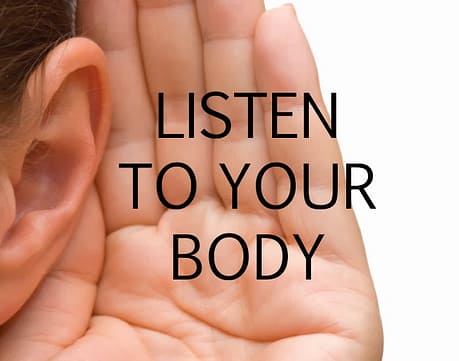Let me be honest…SimplyHealed is my baby.
/0 Comments/in Blog /by Carolyn Cooper Let me be honest…SimplyHealed is my baby. I’ve nurtured her and grown her for many years. This work has changed my life and thousands of student’s lives as well (not to mention their families and clients).
Let me be honest…SimplyHealed is my baby. I’ve nurtured her and grown her for many years. This work has changed my life and thousands of student’s lives as well (not to mention their families and clients).
I’m usually not this bold to speak of my life’s work like this, but this email seems to be writing itself…
Because…do you feel it? Now is the time, our world needs light-workers. We need women and men of integrity who have tools that can cut the tethers of limiting beliefs, that can clean up negative emotions from the past (our own and our ancestors), that can help people be the best version of themselves.
After all, isn’t that what we are all doing? Trying to become the best version of ourselves?
SimplyHealed doesn’t just bring about transformation, it requires it. But don’t let that scare you. It happens in a subtle, elegant way, by empowering you, at your own pace, from the inside out.
I know this because for years I’ve had students return for SimplyHealed Refresher courses after they’ve been using the SimplyHealed method for awhile and. well, they are different. More positive and confident in their actions, their speech, their intentions…they often even look different!
Why am I telling you all this today?
Because my next SimplyHealed Certification Track is coming up this spring.(How appropriate, the time of blooming!)
April 4th – 7th, 2017
in sunny St George, UT
If you are new to my tribe, let me explain what SimplyHealed is:
It’s an Energy Healing method that is simple, graceful, thorough, effective. Tried and proven over many years by many people.
Simply put, SimplyHealed is a way to be happy. To feel light, unburdened, competent, capable.
Logistics:
4-days LIVE in classroom with me and new like-minded friends
PLUS 6 months online:
- Group Training/Coaching Calls
- Business Training (how to get started as a practitioner)
- Personal Healing Sessions (to optimize your mindset)
- Private Forum (connect with seasoned practitioners & archives of info!)
I only open the doors to a special group of students in my cerTrac twice a year. I’d love you to join this group and in 6 months be living your truest life.
I want you to come for YOU, but I also want you to come for ALL the family members and clients you will be able to help. For the inspiring ripple effect you will create in our world.
How would that enhance your life?
As I mentioned before, attending a SimplyHealed course doesn’t just give you information, it brings transformation. Please don’t take only my word for it, learn more and check out the video testimonials from students here.
Now is the time, our world needs you to be your best self, and by doing so your light will help others rise.
Learn more, get your questions answered, and see more videos here: https://simplyalign.com/certify/
OR, if you already know this is right for you, click here to register now.
(2-pay option ends March 3rd)
I would love to have you in this new cerTrac group beginning in April, and in 6 months from now you could have a life and a healing practice that you love!
Much love,


 Great ideas can mean the difference between mediocrity and huge success, between boredom and passion. Whether you want to write an e-book, plan a family trip, or even landscape your yard, consider the following tips:
Great ideas can mean the difference between mediocrity and huge success, between boredom and passion. Whether you want to write an e-book, plan a family trip, or even landscape your yard, consider the following tips: The body holds much of the information we need to function at our best, but too often we ignore its messages and plow ahead with what our minds tell us.
The body holds much of the information we need to function at our best, but too often we ignore its messages and plow ahead with what our minds tell us. Have you ever noticed how GOOD it feels to be really listened to? It’s impactful, particularly when the listening goes beyond just the words you’re speaking. That kind of artful listening conveys respect and value to the speaker, and promotes positive relationships of all kinds.
Have you ever noticed how GOOD it feels to be really listened to? It’s impactful, particularly when the listening goes beyond just the words you’re speaking. That kind of artful listening conveys respect and value to the speaker, and promotes positive relationships of all kinds.  Imagine the space this article fills as blank.
Imagine the space this article fills as blank. How to raise kids who are kind and considerate is a hot topic these days. With so much bullying happening in the world, both in schools and via the Internet, it seems more important than ever to raise kids who can be thoughtful and empathetic towards other people.
How to raise kids who are kind and considerate is a hot topic these days. With so much bullying happening in the world, both in schools and via the Internet, it seems more important than ever to raise kids who can be thoughtful and empathetic towards other people.  “If unresolved anger is a toxin to the spirit, forgiveness is the antidote,” wrote Brian Luke Seaward in his book, Stand Like Mountain, Flow Like Water: Reflections on Stress and Human Spirituality.
“If unresolved anger is a toxin to the spirit, forgiveness is the antidote,” wrote Brian Luke Seaward in his book, Stand Like Mountain, Flow Like Water: Reflections on Stress and Human Spirituality. I love August, because I have 2 anniversaries!
I love August, because I have 2 anniversaries!  Stress is a natural and normal “by-product” of every family’s life. In fact, family stress can bring out the best of us: as we stretch to meet the challenges we face, we become better parents, our children blossom and our families grow. But too much stress can spiral our families in the other direction. Take this Thriving test to see how your family fares.
Stress is a natural and normal “by-product” of every family’s life. In fact, family stress can bring out the best of us: as we stretch to meet the challenges we face, we become better parents, our children blossom and our families grow. But too much stress can spiral our families in the other direction. Take this Thriving test to see how your family fares. “If you can learn to like how you look, and not the way you think you look, it can set you free.” — Gloria Steinem
“If you can learn to like how you look, and not the way you think you look, it can set you free.” — Gloria Steinem